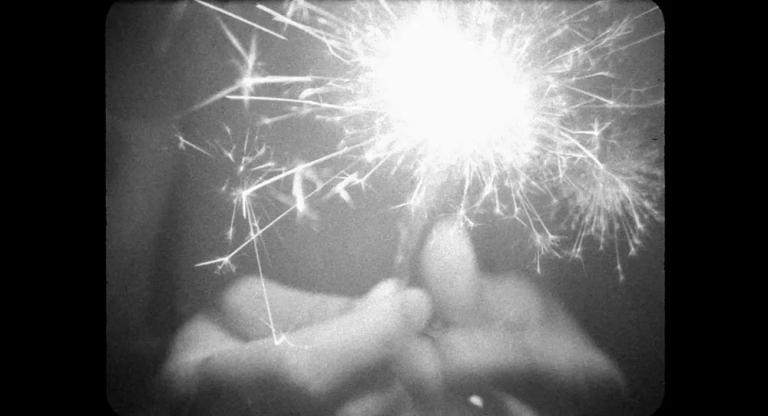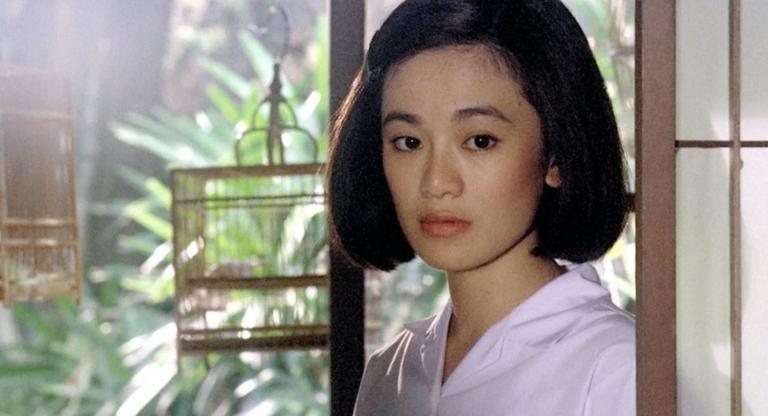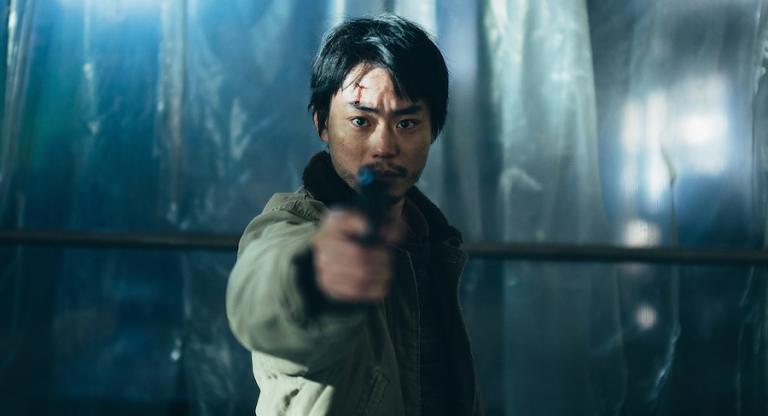Born and raised in the southeast corner of the San Francisco Bay Area, I frequently sought out places that peaked my developing curiosity in moving images as a young cinephile. Lo and behold, the Niles Essanay Silent Film Museum—a museum and exhibition space run by a set of devoted individuals dedicated to the Bay Area’s silent era film history—turned out to be quite near me. Established in 2004, the museum has been showing silent films with live musical accompaniment every Saturday night in the Niles neighborhood of Fremont, California, since 2005. While the Bay Area’s established arthouses often gain more recognition for their contributions to film culture, the Niles’s project to educate the general public about the area’s history during the earliest days of the motion picture industry distinguishes it as an invaluable component of the film scene.
The Niles historian David Kiehn is one of the dedicated individuals working at the museum. He became involved with the organization when he began writing a book about the West Coast branch of the early motion picture company Essanay Studios before the museum's establishment. Eventually, he was recruited among its ranks as a projectionist. Besides being a renowned silent era film historian, Kiehn maintains the museum's projection booth, which, to this day, is still lined with old steel sheeting as a nod to the exhibition industry’s long-outdated nitrate “safety measure” practices. The booth has even kept the phrase “spit in box” on its steel walls back from when projectionists chewed tobacco in the booth in between changeovers. Kiehn also restores silent era cameras and technologies in addition to supporting exhibition projects in collaboration with the museum's volunteers. During one of his program introductions, he mentioned how he had to create new English intertitles for the about-to-screen Dutch-language prints that the museum had purchased using his animation stand, which he inherited from the Bay Area independent filmmaker and former titler Rock Ross. Kiehn's practice is representative of an unmatched zeal for film preservation and access.
Patricia Ledesma Villon: Could you talk a bit about your role and what you do at the Niles Essanay Silent Film Museum?
David Kiehn: Fortunately, it's been changing a bit since we started doing films in 2005. I was the projectionist and the programmer for the film schedule. I was kind of doing maintenance and restoration in the building as well as film preservation. We've got a lot of unique prints in our collection that we've restored.
PLV: How did you first get involved with the museum?
DK: It came about in 1995 when I was going to write a screenplay about the Essanay Company in town. I'd known about it for years and even though I lived in Berkeley, only about 30 miles away from Niles, I'd never come before. I thought, I'll just do some background research to see what Niles is like now and I was surprised by how much the town still had that feel from 100 years ago. If I could find enough information, it really deserved to be a book. And so, in the process of doing that research and tracking down families of cast and crew people to find photographs because I hadn't been finding enough of them, I started giving slideshow presentations about Essanay and Bronco Billy because so few people had heard about him. I was trying to drum up business for my future book and I gave a presentation to the Niles Main Street Association.
You'd think people in Niles would have known a lot about this, but they hadn't seen most of the photographs that were in my slideshow. They were so impressed that several of them met with me afterward to talk about having a Bronco Billy Silent Film Festival. That happened in 1997. I gave the presentation and the next year was the first festival. That's what really took off and created the museum just a few years later.
PLV: And then you became the projectionist and historian?
DK: Nobody else knew how to run a projector or knew anything about the films, so I took it on. About a third of the audience we get has never been to the museum before, so there's a constant need to create publicity so people discover the museum and I also continue [to do] that part.
PLV: How often do you draw from the museum's collection for your own programming?
DK: Almost all the time. We occasionally get things from the Library of Congress—we don't have to pay an exhibition fee for that. But the shipping costs for a 35mm print is more than we would take in for a screening [even] if it's a full house. That's one of the reasons why we wanted to get a film collection ourselves, so that we could draw from it and, you know, we're showing films that we've never shown before all the time every year.
PLV: The last time we spoke I asked you about the new intertitles that you made for one of the film prints in the Bronco Billy Silent Film Festival in 2022.
DK: Those were 35mm prints that we acquired from the Eye Filmmuseum [in the Netherlands]. We've also gotten some from the Library of Congress. Some of them have Dutch titles or other foreign titles, or sometimes the titles are missing. And sometimes, there's other things that need to be done to make them more presentable. I've got an animation stand with a 35mm Mitchell camera on it and I've done new titles for quite a few films.
PLV: So you've made new titles in English because they're in Dutch?
DK: Yes, translations, and making it look like they're original matches.
PLV: I think that keeping that historical context is so important for the Niles because you're preserving and presenting a lot of those films in their original contexts for a curious new public. Speaking of which, I've always wanted to talk to you about the booth. I find it very interesting that you’ve kept the old metal sheet lining on its walls. Why was keeping the booth like that essential?
DK: You just don't see very many of those anymore and people are fascinated. Why is it there? Because of the nitrate film problem [in the past], the fire hazard. It's a telling point about the whole building and the industry at that time. It's important to have all that as this whole building—to think that Charlie Chaplin watched movies in this very theater is pretty astounding. We've got documentation that proves that.
PLV: I'm wondering if you could talk a bit about other film preservation projects that you're working on?
DK: There was a kind-of benefactor named Walter Levy who died several years ago [and] shot some films in the early 1960s—16mm films that had a magnetic soundtrack that we're trying to get restored because they've got vinegar syndrome. We've done the transfers, but we want to find a way to get them back onto film. And so the [volunteer film preservationist Zack Sutherland] is working through Diamant software to clean them up. They projected the original camera reversal prints and they've got scratches and other blemishes.
There's a Bronco Billy comedy called Alkali Ike Bests Broncho Billy (1912) that I believe was shot in Lakeside, near San Diego, that we're also working on. That came from a 28mm print in our collection and we got another 28mm print from the George Eastman Museum. Because, as you can imagine, these old prints that were shown sometimes got damaged in the projector and there'd be frames missing—maybe two or three, four or five, six frames—that are jump cuts in the film. Amazingly, most of the footage that's missing from one print is covered in the other prints, so we're cleaning that up. It also had a camera problem in it, in the registration, and that was not very good. The image jitters a little bit and we're trying to correct that so it's not an issue for audience screenings.
We've got a lot of nitrate films in our collection that are stored off-site that need some attention, some that were shot in the Bay Area—in San Francisco, Berkeley, and Oakland. Besides the film work, we've also got a lot of silent era equipment in our collection and we keep getting more all the time as well. I'm kind of proud of the fact that we display a lot of the equipment that was made for silent filmmaking that you don't often see in other places that have large collections.
PLV: You're also restoring the equipment for it to be usable. I remember you showed us a hand crank camera that you worked on a while back.
DK: You know, otherwise, it's just kind of a dead artifact that is a shadow of its former self. We've got a Eberhard Schneider film perforator that was made somewhere around 1910 or before that is really primitive compared to the Bell and Howell perforator, and we got that working. And, [we’ve got] an Eberhard Schneider step printer that is also working again. To my knowledge, I don't know anywhere in the world that has one.
PLV: Are you perforating things just for fun?
DK: We do. I found some 35mm microfilm online. We do run the perforator to demonstrate what it's like. It takes forever to run a roll. That's why Bell and Howell dominated the industry, because they made something that was better than anybody else’s: it was quick, efficient, and precise. People don't often realize the depth of what was happening in the early days of silent filmmaking and I think it's important for us to be able to display that material.
PLV: What is your favorite oddity from the collection?
DK: One of the things that we've got is a Prismacolor camera that was made in 1917 by Walden Ball, who was an inventor and lab owner in San Francisco. He made it for the West Coast Prismacolor representative George Stone in 1917 to shoot time lapse animation, which was good for Prismacolor because if the things you were shooting didn't have a lot of movement, you didn't see the flaws in Prismacolor. Color fringing was the major problem with the first Prismacolor version. We've got that camera in our collection that is unique, if they only made one of them.
And, it's got the Bay Area connection. George Stone eventually became a professor at San Jose State University and donated that camera to the California Academy of Sciences in the 1950s, where I saw it on display as a kid in the 1950s. [The Academy] de-acquisitioned all of that camera equipment and we managed to get three cameras from that collection. We've got all three of them on display. The Prismacolor camera is missing its lens and mount, and we have a local machinist in town that could probably manufacture the mounts. I'd love to be able to get it working. It's an additive process Prismacolor camera.
We also have the subtractive process Prismacolor camera that was made a few years later on the East Coast and shot the first feature film to color process. I'd love to get that camera working, too. It's operating but I need to run some film through it.
PLV: For the nitrate, are you planning to make new prints to safety copies?
DK: It's actually nice to be able to do the photochemical process to copy onto a film negative. I've got an optical printer that I can do that with 28mm for the nitrate footage. And so, when you don't have a lot of problems with the film then that's really the best way to go because the photochemical process is so much cheaper than going to a digital cleanup and then printing back on the film—that's multiple times more expensive. If we can avoid that, it's the best thing to do.
PLV: You’re also a very prolific writer. Are there any new writing projects or research projects you're working on?
DK: Yes, all the time that I was researching my Niles Essanay book, I was also gathering material for a Chicago Essanay book. It has been a lot tougher to gather material because when the Chicago studio was established in 1907, movies were looked down upon by newspaper writers in Chicago quite a bit. Even though there were a lot of newspaper companies in Chicago, they really weren't writing about the studio.
It's been a challenge to gather material, but thanks to the things that are coming up on the internet—Lantern, newspapers.com, and GenealogyBank—that have newspapers from outside of Chicago that were reporting on early filmmaking I'm now finding stuff that I couldn't have found even 10 years ago online. The murkiness of the early film industry is unbelievable, especially regarding what hasn't been written about it.
Show People screens on March 2, on 35mm with live piano accompaniment by Cliff Retallick, at the Niles Essanay Silent Film Museum. Lara Gabrielle, the author of “Captain of Her Soul: The Life of Marion Davies,” will be in attendance for a post-screening discussion.





